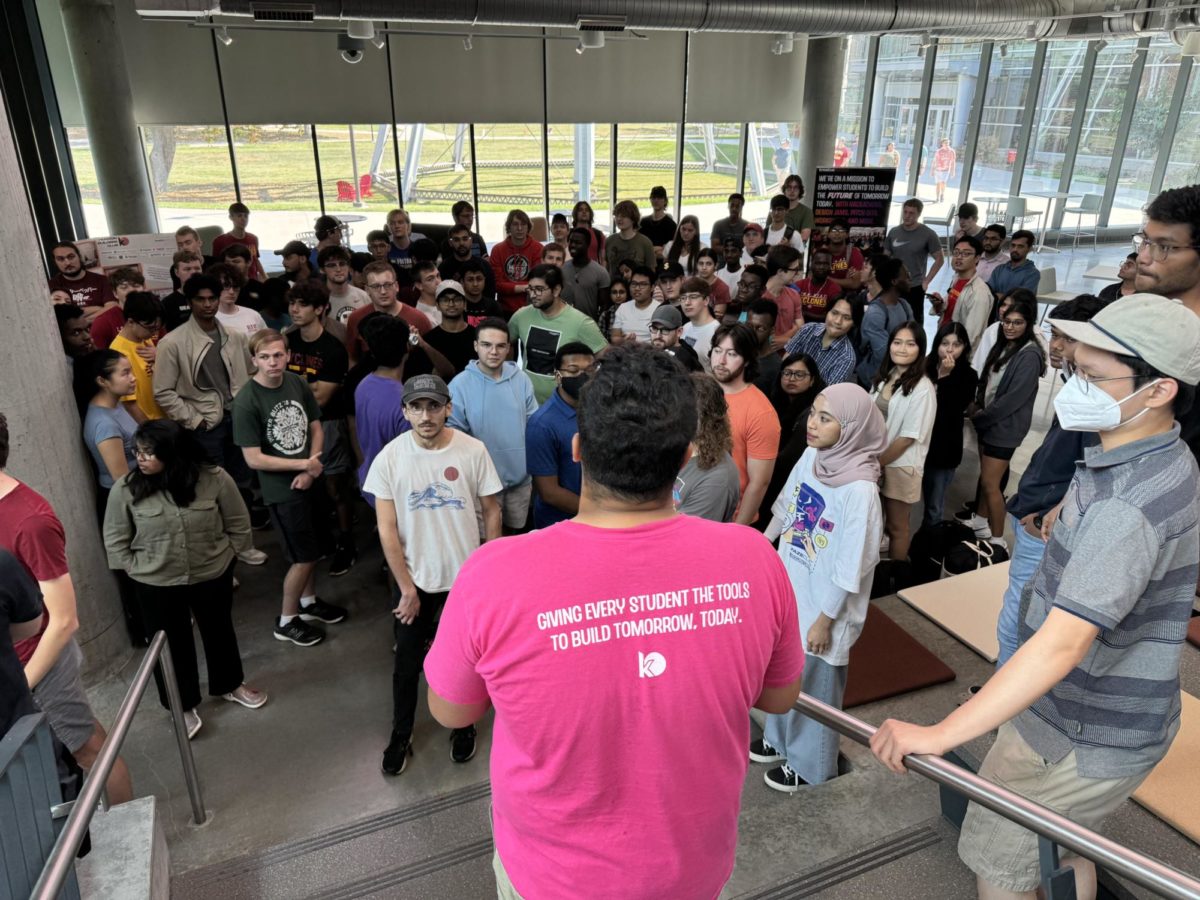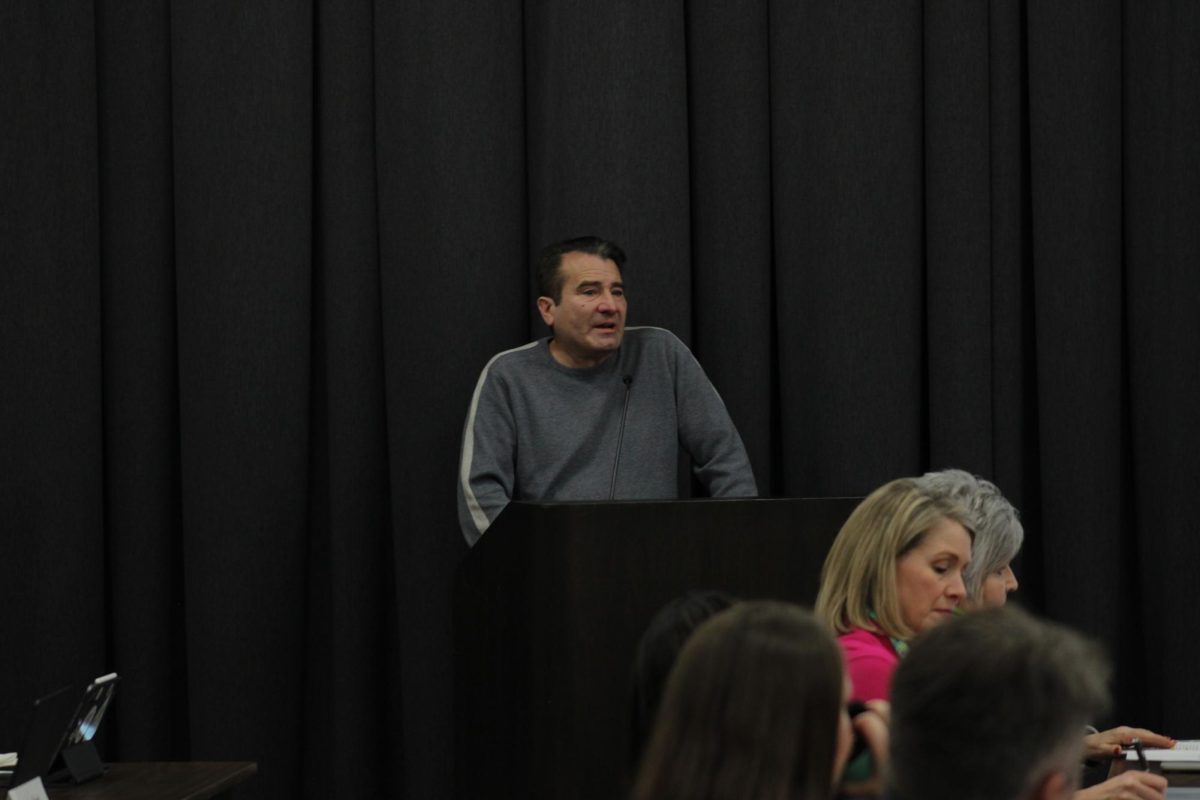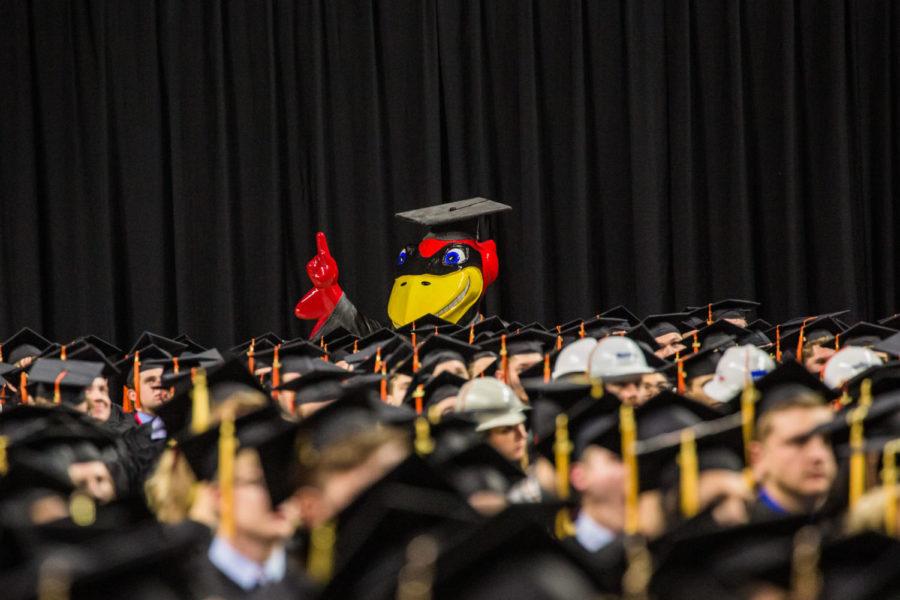Students began HackIowaState v2, an invention competition, by making their rounds around the Student Innovation Center and forming four-person teams, looking to solve a problem with a technology-based solution.
This semester’s event asked students to find an agriculture-related solution, but according to the event’s organizer Armaan Gupta, a senior in management information systems, the event focuses on learning about the working environment and making friends.
“Folks are encouraged to spend a day finding teams, building solutions and presenting those problems and solutions to a team of judges,” Gupta said. “Our goal of this event is to help you guys learn things you don’t learn in the classroom and give you the skills and the environment to actually build something.”
The event, led by Gupta and some of his friends, also hosted workshops teaching software development platform Git, business building strategies, web development and how to pitch a product.
“So if you can get these skills now when you’re a student, it’s going to help you a lot when you’re actually in the workforce,” Gupta said. “The best part, in my opinion, is you get to meet new people.”
Gupta told a group of first-time attendees that the event is meant to differentiate from what they may learn in a classroom.
“A lot of classrooms, it’s either a lot of hand-holding or not enough hand-holding,” Gupta said. “We want this environment to be fun, collaborative, to learn and to actually do something that you guys think is worth working on.”
The event began at noon Saturday and finished around noon Sunday, hosting 128 students from six universities: Iowa State, South Dakota State, Des Moines Area Community College, Western Governors University, Western Michigan University and University of Minnesota.
Attendees spent the first part of the day forming a team if they did not come with one. Once teams formed, it was a race to research and identify a problem.
Gupta said once attendees “find something that seems compelling,” they should engage in researching problems and a solution. Teams then designed, and in some cases built, an idea, product or solution of some sort to be pitched to a panel of judges.

Groups pitched to 11 judges, including CEOs, software engineers, founders of software companies and more.
Teams had three–four minutes to pitch their solution via a slide-deck to judges before fielding questions from industry professionals.
Through coding and software, “people are working on things they are probably experiencing in their own life,” Gupta said.
Participants worked on solutions, some finding solutions within the first hour and others spending the first several hours evaluating potential solutions.
One group developed a software to evaluate how climbable a tree is; others chased a solution of making farmers markets easier to find.
Ian Nelson, a sophomore in computer engineering, and his team worked to create a machine learning system to minimize the amount of pesticides used on a field. Nelson said the way he used technology at HackIowaState v2 is unlike his classroom experience.
“What I’m doing, I’ve never touched any of this kind of stuff in a class,” Nelson said. “It’s a little bit of a shock about the stuff that I’m trying to do.”
Nelson added that he is a sophomore but has yet to experience some of the work he did at HackIowaState v2.
“It’s actually completely night and day versus a class,” Nelson said. “It’s not even close to what I’ve done before. I’m really glad that there’s at least some place to do that here.”
Clarence Paintsil, a freshman in engineering, and Bell Mohd Radzi, a senior in electrical engineering, were working on a team to make the best use out of farm ground, especially areas affected by climate change.
“I think it’s pretty good that it really gets us to brainstorm and find innovative ways to go about finding a solution, and it’s not experience that we have usually,” Paintsil said. “So, it’s pretty nice to have that freedom to really try and find solutions.”
Paintsil also commented on the difference between class and a hackathon like Gupta’s.
“It’s pretty stressful trying to figure out, trying to build everything, trying to cram everything at once, then we have to present it in like three to four minutes,” Paintsil said. “I think it really gets us to lock in deep and try and figure it out as much as possible.”
HackIowaState v2 was Mohd Radzi’s first hackathon.
“It’s really important to get to work with your partners and teammates,” Mohd Radzi said. “It’s fun. It’s challenging also, but it’s fun.”
Some students spent the night in Howe Hall, the other building the event was hosted in.
One attendee, Gannon Ryan, a sophomore in aerospace engineering, said he was excited for the career preparation an event like HackIowaState v2 can provide.
“I think the presentations that this event offers would be very, very helpful in things like a career fair or applying for internships and things like that,” Ryan said.
The first place solution was Ag @ Home, which assists people beginning their gardening journey. The product hosts a place for calendars, articles and project management.
Ag @ Home was created by Marija Luca Planinic, a freshman in marketing, Vy Huynh, a senior in management information systems, Denisse Hernandez, a senior in management information systems and Sophie Rutz, a sophomore in computer science.
The team with “best computer vision,” was a software called BabyCow, which detects when cows are giving birth, an effort to reduce calf fatalities.
The second and third place teams provided solutions for heavy equipment repairs and managing dairy cow records.
Participants were competing to win Amazon gift cards, Iowa State umbrellas, gaming mice and movie tickets, but Gupta emphasized the skills and relationships built have been his biggest takeaways when participating in similar events.








